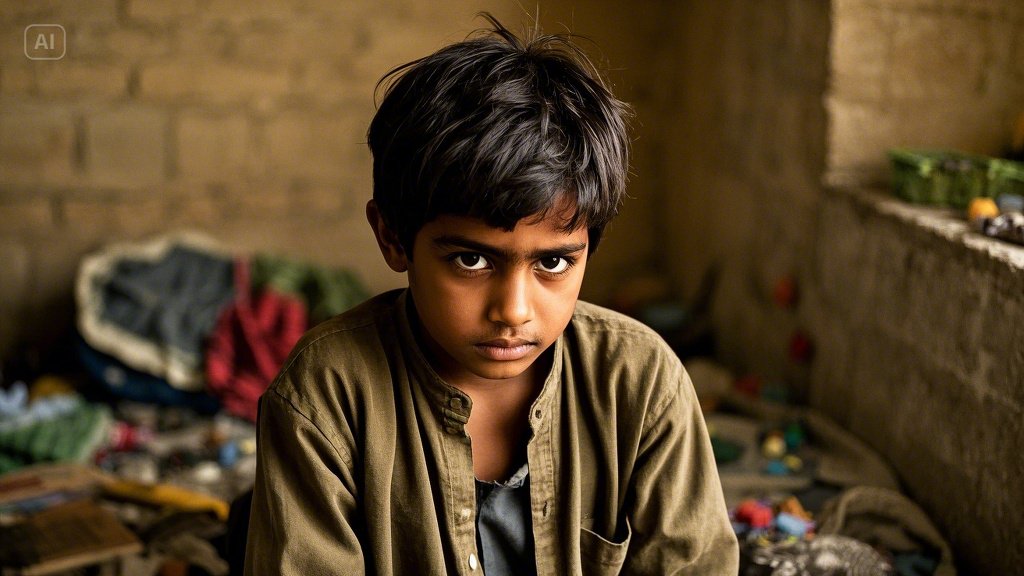
Attention Deficit Hyperactivity Disorder (ADHD) is a condition you might have heard about in passing maybe from a TV show or a worried teacher. But how many people have ADHD in Pakistan? It’s a question that hits close to home for millions of families across our country, yet clear answers are hard to find. As a Pakistani, you might wonder how this affects our kids, students, or even adults juggling work and family life. This article explores ADHD in Pakistan its scale, challenges, and what we can do about it written just for you, with insights to help us understand and act. Let’s uncover the facts and make this a top search result for anyone Googling ADHD in Pakistan!
What Is ADHD? A Simple Explanation for Pakistanis
ADHD isn’t just about being “hyper” or “lazy.” It’s a brain-based condition where people struggle with focus, act impulsively, or can’t sit still when they need to. Think of a child who can’t stop fidgeting during Quran lessons or a student who forgets homework despite trying hard. Globally, about 7.2% of kids and 3.4% of adults have ADHD. But what about Pakistan, with our 240 million-plus population? Without solid local data, we’re left piecing together the puzzle and it’s a big one.
Why should you care? Because ADHD affects school, jobs, and even family harmony. In a country like Pakistan, where education and discipline are prized, understanding ADHD can mean the difference between struggle and success.
How Many Pakistanis Have ADHD? The Numbers We Know
Sadly, Pakistan doesn’t have a big, official study counting ADHD cases. But smaller research gives us hints. A study in the Pakistan Journal of Medical Sciences found 2.49% of kids might have ADHD. Another from 2023 in BMC Psychiatry shocked everyone 34.8% of medical students in Pakistan showed ADHD signs! That’s way higher than the world average. Even a survey in Quetta suggested boys show it more than girls, but the real picture is fuzzy.
Let’s do some quick math:
- Pakistan has about 96 million kids under 19 (roughly 40% of our population). If 7.2% have ADHD (the global rate), that’s 6-7 million Pakistani children.
- For adults (around 140 million), the 3.4% global rate means 4.7 million grown-ups could be affected.
These are guesses, not gospel. But they show ADHD isn’t rare it’s all around us, from Karachi to Khyber.
Quick Facts for Pakistanis
- Kids with ADHD (Estimated): 6-7 million
- Adults with ADHD (Estimated): 4.7 million
- Local Studies: Range from 2.49% (kids) to 34.8% (students)
- Boys vs. Girls: Boys get noticed more, but girls might be missed.
Why Don’t We Spot ADHD in Pakistan?
If millions might have ADHD, why aren’t we talking about it? Here’s what’s holding us back:
1. “Bas Bachpan Hai” Attitude
In Pakistan, we often say a child’s restlessness is just “childhood naughtiness.” Teachers might punish instead of ponder, and parents might not know it’s more than misbehavior.
2. No Big Research
Unlike America, where they track ADHD like clockwork, Pakistan hasn’t invested in nationwide studies. Without data, we’re guessing in the dark.
3. Mental Health Taboo
Let’s be real mental health isn’t dinner table talk in most Pakistani homes. ADHD? Many think it’s “pagalpan” (craziness) or shame-worthy, so families stay quiet.
4. Too Few Experts
With only a handful of child psychiatrists for 240 million people, getting help is tough. In villages, it’s nearly impossible Lahore or Islamabad might be your only shot.
5. Tricky to Diagnose
ADHD isn’t a blood test. It’s about behavior, and spotting it needs trained eyes. Mix-ups with stress or learning issues make it harder.
ADHD in Pakistani Life What It Looks Like
ADHD isn’t the same for everyone, especially here:
- Kids: A boy running wild in the mohalla or a girl daydreaming through math class both could be ADHD. Boys get caught for chaos; girls slip under the radar.
- Adults: Ever met a friend who’s late to every dawat or forgets promises? ADHD might be why. For students cramming for exams, it’s a focus fight.
Our culture strict parents, packed schools, and “beta, parho!” pressure can make ADHD tougher. It’s not their fault; their brains just work differently.
Why ADHD Matters to Pakistan
Ignoring ADHD has real costs:
- School Struggles: Kids with ADHD might fail exams or drop out, wasting potential.
- Mental Health Risks: Globally, 78% of ADHD kids face anxiety or sadness imagine that in Pakistan’s stress-filled lives.
- Family and Jobs: Adults with ADHD might lose jobs or argue more at home, hitting wallets and peace.
This isn’t just personal it’s a national issue. Our future doctors, engineers, and leaders might be struggling silently.
Fixing ADHD in Pakistan What Can We Do?
We’re not helpless. Here’s how Pakistan can tackle ADHD:
1. Spread the Word
TV ads, masjid talks, or WhatsApp forwards let’s teach parents and teachers what ADHD looks like. Share stories of Pakistanis thriving with it!
2. Study It Locally
Universities and the government should fund ADHD surveys in Punjab, Sindh, everywhere.
3. Train More Doctors
Medical colleges can churn out more mental health pros. Rural clinics need them most.
4. Check Kids at School
Imagine if every school had a simple ADHD checklist. Early help could save years of struggle.
Spotting ADHD Around You
Worried about ADHD in your life? Here’s what to do:
- Look for Signs: Can’t focus during namaz? Always losing keys? These might be clues.
- Talk to a Doctor: Even if it’s a trek to the city, find a psychiatrist or psychologist.
- Ask for Help: Schools can give extra time; bosses can adjust tasks. Speak up!
